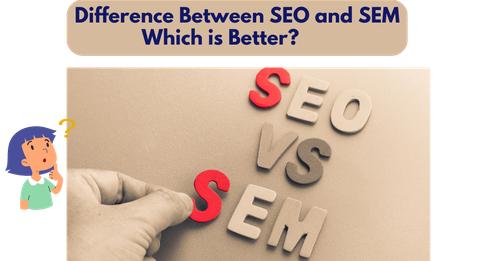Difference Between SEO and SEM | Which is Better?
In the world of digital marketing, two terms often come up when discussing strategies to improve online visibility: Search Engine Optimization (SEO) and Search Engine Marketing (SEM). While both are crucial for driving traffic to your website, they are distinct approaches with their own benefits and challenges. At TechRougeHub, we help businesses navigate the complexities of SEO and SEM to achieve their marketing goals. But which one is better for your business? Let’s dive into the differences and find out.
Understanding SEO
SEO (Search Engine Optimization) is the process of optimizing your website to rank higher in organic search engine results. This involves a variety of tactics, including keyword research, on-page optimization, content creation, and link building. The goal of SEO is to improve your website’s visibility for relevant search queries without paying for placement.
Key Aspects of SEO:
Organic Traffic: SEO focuses on attracting unpaid, organic traffic by improving your website’s relevance and authority in search engines.
Long-Term Results: SEO is a long-term strategy that requires consistent effort but can provide sustainable results over time. Once your site ranks well, it can continue to draw traffic with minimal ongoing investment.
Credibility and Trust: Websites that rank highly in organic search results are often seen as more credible and trustworthy by users, as these rankings are earned rather than paid for.
Cost-Effective: While SEO requires time and effort, it doesn’t involve direct payments to search engines. It can be more cost-effective than paid strategies in the long run.
Understanding SEM
SEM (Search Engine Marketing), on the other hand, is a broader term that includes both SEO and paid search advertising, such as Pay-Per-Click (PPC) campaigns. However, in common usage, SEM typically refers to paid search efforts specifically. SEM involves purchasing ads that appear in search engine results, typically above or alongside organic listings.
Key Aspects of SEM:
Paid Traffic: SEM focuses on driving traffic through paid ads. You bid on keywords, and your ads appear when users search for those terms, generating immediate visibility.
Instant Results: One of the biggest advantages of SEM is the ability to see results quickly. As soon as your campaign goes live, your ads can start driving traffic to your site.
Targeted Audience: SEM allows you to target specific demographics, locations, and even times of day, ensuring your ads reach the right audience at the right time.
Control Over Budget: With SEM, you have complete control over your budget. You can set daily spending limits, bid on specific keywords, and adjust your campaigns in real-time to maximize ROI.
SEO vs. SEM: Which is Better?
The choice between SEO and SEM isn’t always clear-cut, as both strategies offer unique benefits. Here’s a comparison to help you decide:
1. Timeframe:
- SEO: Ideal for businesses looking for long-term growth. It requires time to see significant results but provides lasting benefits.
- SEM: Best for businesses that need immediate visibility and quick results. It’s effective for short-term campaigns or when launching a new product.
2. Budget:
- SEO: More cost-effective in the long run, but requires an investment in content creation, technical optimization, and ongoing maintenance.
- SEM: Requires a direct budget for ads. Costs can add up quickly, especially in competitive industries, but you have control over your spending.
3. Credibility:
- SEO: Organic listings are often viewed as more credible by users, leading to higher trust and engagement.
- SEM: Paid ads can drive traffic, but users may be wary of clicking on ads, especially if they prefer organic results.
4. Competition:
- SEO: In highly competitive markets, ranking organically can be challenging and time-consuming.
- SEM: Allows you to compete more effectively in competitive markets by bidding for top positions in search results.
5. Sustainability:
- SEO: Provides sustainable traffic growth over time, with a focus on building a strong online presence.
- SEM: Delivers traffic as long as you’re paying for ads. Once you stop funding the campaign, the traffic stops.
Conclusion: SEO and SEM – A Balanced Approach
Rather than choosing between SEO and SEM, many businesses find that a balanced approach works best. Combining the long-term benefits of SEO with the immediate impact of SEM can help you achieve both short-term and long-term goals. At TechRougeHub, we specialize in crafting customized digital marketing strategies that integrate both SEO and SEM to maximize your online presence.
Whether you’re looking to boost your organic rankings or launch a targeted ad campaign, our team of experts is here to guide you every step of the way. Contact us today to learn more about how we can help your business thrive in the digital landscape

